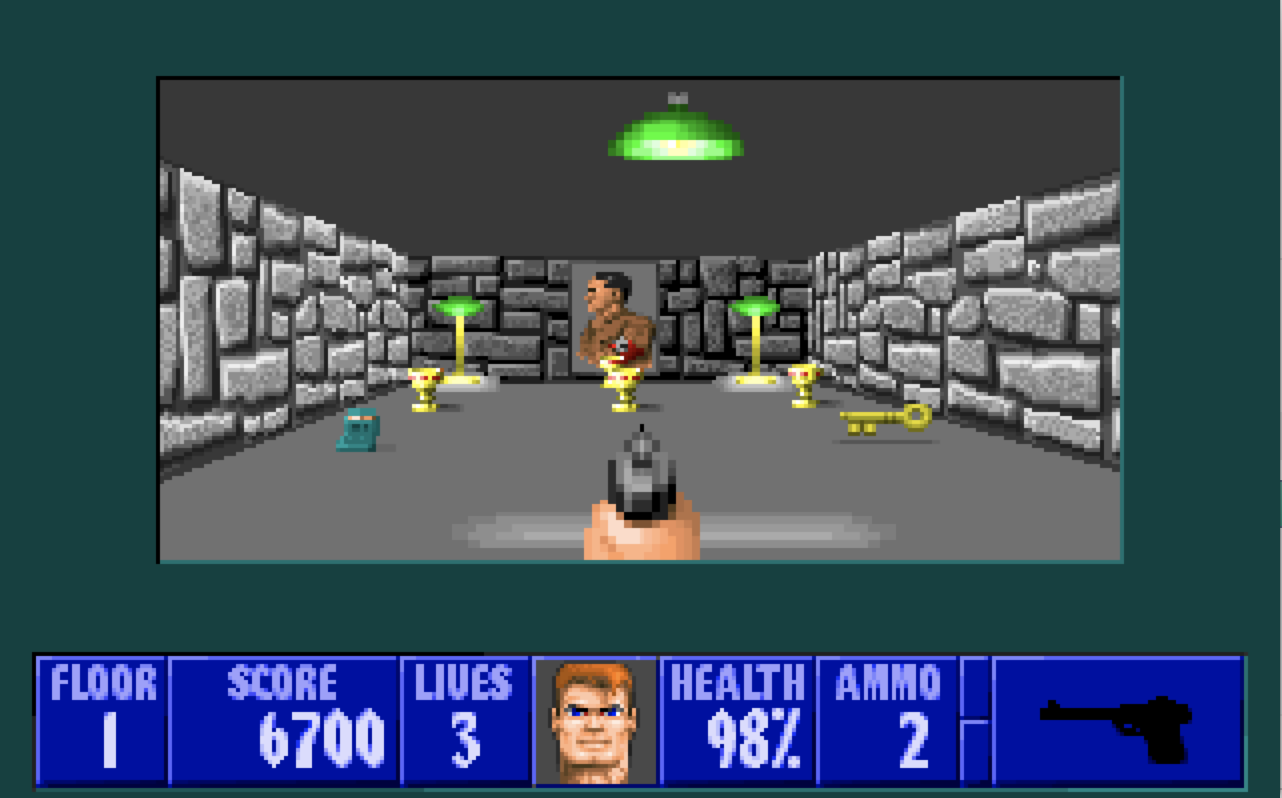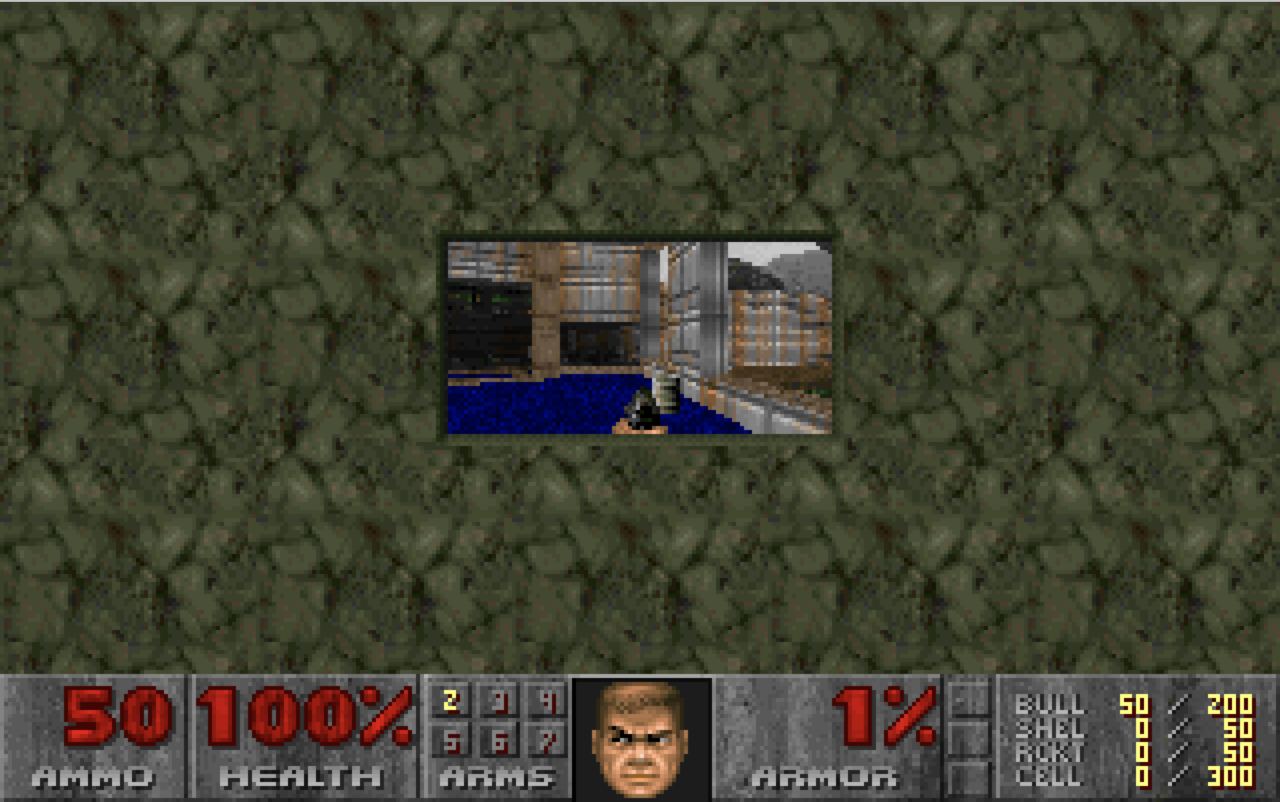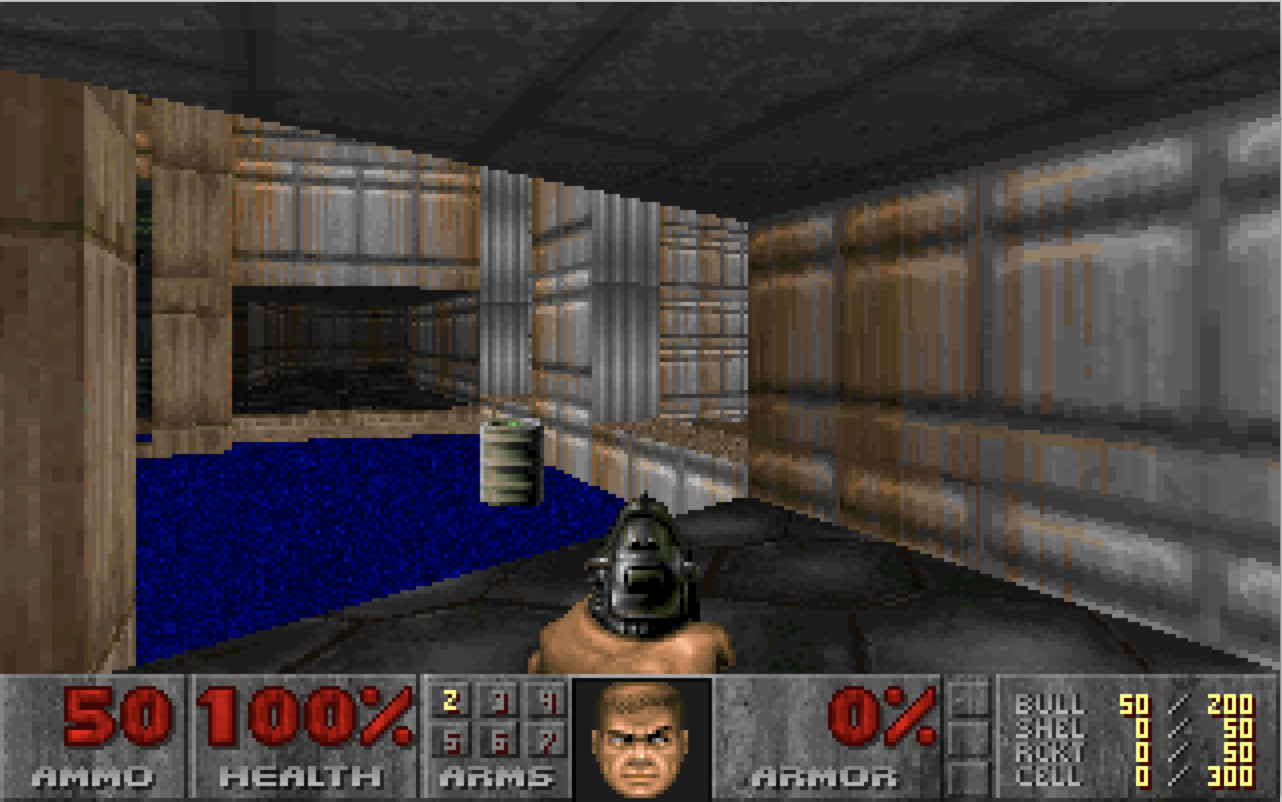One of the most wonderful things about gaming on a PC is that, unlike consoles, you’re not locked into static hardware. You can upgrade to your heart’s content, swapping in new processors, video cards, hard drives…all sorts of stuff. However, this strength also means that the system requirements for new games are always a moving target. I would argue that this is less of a problem in modern gaming, as we’ve reached a point where monumental improvements in hardware don’t happen at a fast pace anymore.
There was a time, though, when processors and video cards seemed to double in speeds every year or two. The shiny new computer you got for Christmas in 1987 was no longer adequate for the games of 1989. Sure, businesses upgraded because of spreadsheets and number crunching, but for gamers, each little epoch of hardware seemed to be dominated by one or two games that needed a higher performing system or a new operating system to run correctly.
Let’s go on a journey through these epochs, focusing on the requirements and, more importantly, the games.
The First Epoch (1987 – Wolfenstein 3D)
I’m going to arbitrarily start the clock in 1987. The fastest x86 CPU of the day was the 80386. 4MB of RAM was a lot. And the PC game you had to have was Wolfenstein 3D.

The PC I’m starting with is a pre-built machine. I would wager a fair amount of PC gamers probably started with a machine that someone else built. In this case, it’s the IBM PS/2 Model 70. This was an expensive machine for its day, designed mostly for businesses. But then, at this point in time, PCs were not necessarily consumer focused.
The PS/2 in question came loaded with an Intel 80386 at a blazing fast 16Mhz clock speed. It’s also rocking 6MB of RAM, VGA graphics and a 60MB hard drive. This was actually a pretty stout system for the day, though there were faster (and cheaper) options on the market. It also had a pretty sizable limitation: MicroChannel Architecture.
MicroChannel was IBM’s answer to the aging ISA (then typically known as AT) bus. The ISA bus was slow, didn’t support Plug and Play and (most importantly to IBM) was royalty-free. This last bit is what really caused some controversy. IBM was happy to try to sue the pants off of any company that tried to make a PC compatible machine in the 80s. With MicroChannel architecture (MCA), IBM hoped to be able to charge a royalty not just on every card sold, but every MACHINE sold that contained MCA slots.
Naturally, everyone else just kind of gave the big middle finger to IBM and went right on making ISA cards, even improving the standard to allow for more options. These same companies later helped to develop PCI, which incorporated many of the advantages of MCA without the license costs.
The fact that this machine has MCA slots means that a sound card is not really an option (really, in either 1987 or now). Thankfully, most games had a fallback option of using the PC speaker. While my first 386 was not an IBM, I also didn’t have a sound card. I had a PC speaker and I liked it, damn it. However, if you had an ISA-based 386, you could easily upgrade to an AdLib card or a SoundBlaster and now your Wolfenstein 3D experience included sound effects and music.
Intel eventually released faster versions of the 80386, topping out at 40Mhz around 1991-92. These were generally pin compatible with whatever 386 you had in your board, allowing an easy upgrade after changing a few jumpers. Of course, some boards also had processors that were soldered in. We’re not talking about those boards today, so stop bringing them up.
Given a few upgrades, you would have had a pretty good run of things with your modified 386. Most games released in the late 80s and early 90s would have run great at those speeds and an upgrade to 40Mhz would have allowed you to run Wolfenstein without any borders. What happened to make me yearn for something better?
The Second Epoch (1993 – DOOM)

The Second Era was dominated by one name above all others: Doom. Doom took your previously vaunted 386 and proceeded to beat it to a senseless, bloody mess. True, you could perhaps increase screen size slightly if you had the 40Mhz variant and didn’t mind playing it more like a game of Myst.
I didn’t grab frame rates because most people can’t really associate a frame rate to a play experience. Let me just say that it was atrocious. Add to that the insult of not having a sound card, relying on the PC speaker to make some burbling noises when you acquire an item. The PC speaker doesn’t allow for music, so you’ve got a silent experience coupled with some beeps and a few boops whilst trying to determine what, exactly, was on the screen when you died.
How can this be? My 386 was such a workhorse.
The core problem is raw speed, which the 386 lacked. Doom also required more memory, more hard drive space and (again) a sound card for the best experience. Doom was a leap above Wolfenstein, with wide open spaces, skyboxes, tons of enemies and high-speed action. In short, it was a game that called for a new processor.
In August of 1992, Intel released the 66Mhz version of the 486. The 486 was the logical continuation of the 386, but it ran a whole lot faster. And that’s not just because the clock speeds were higher: given similar clock speeds, the 486 would generally outperform the 386 2 to 1. The 486 also saw the introduction of a new bus for video cards: VESA local bus.
The VESA local bus was an extension to ISA that allowed for increased I/O bandwidth. This, in turn, allowed for faster video cards. Ironically, the VLB connector (which was positioned right behind the ISA slot) was the exact same part as the IBM MCA port, though it was rotated. IBM had anticipated selling quite a few MCA systems, but since that didn’t work out the mechanical connector was widely available.
Now, my particular 486 is an IBM EduQuest Fifty-CS. Yes, I could have upgraded my 386 to a 486. In fact, in 1993 I might have done that, if the price was right. However, the 486 motherboard on the EduQuest has some nifty features that made it a nice upgrade. For one, the processor is socketed. This means that I could upgrade the original 486/33 to a 486/100. This system lacks VESA, but it does have an IBM 8514/a graphics card built in. This card has 1MB of graphics RAM and performs very nicely. What this system DOES have is several ISA slots, one of which now holds the next part of my upgrade: a Creative AWE64 sound card.
Adding sound to a system in the early 90s really made playing games a lot more fun. Instead of the clicks and beeps of a PC speaker, you now had access to a full range of MIDI instrumentation and sound effects. The AWE64, in particular, was an excellent card that was great for DOOM.
The next item that was improved from the 386 machine was a larger hard drive. The 386 I had used a 60MB MCA hard drive. This 486 has a 220MB IDE hard drive. Should I want to go bigger, the BIOS will support up to a 500MB drive. Along with the IDE hard drive, this system now also includes a CD-ROM drive. Having access to that drive greatly increases the number of available games and makes the system more versatile overall.
So, does the 486 improve the Doom experience? See for yourself.

We’re now running at full screen (and full speed). Music and sound are present (you’ll…just have to take my word for that one). In short, the game runs flawlessly. This era was full of wonderful DOS games that ran very well on the 486/66 (or 100, in my case). ID released Heretic and Hexen, both running on a modified Doom engine. Speaking of Doom, Doom II came out shortly after the first one and also runs perfectly.
Certainly, there were games from companies other than ID. And games that weren’t first person shooters. TIE Fighter, SimCity 2000, Command and Conquer, and the list goes on. This was a truly wonderful era to be a PC gamer. It’s also interesting to note that this was really the first time that the PC outclassed the consoles of the day. When Doom came out in 1993 (well, almost 1994), none of the consoles on the market could run it very well. It took the raw firepower of a PC to run the game to its fullest (and have all the levels/enemies/music at the same time).
The Doom Epoch (I’m going to continue to use my arbitrary names) was a wonderful time for PC gaming. For the first time, PC’s were capable of playing games that consoles simply couldn’t run. Hundreds (probably thousands) of games run well on a 486. Expansion options abound if you want to tinker: better sound or video, the proliferation of CD-ROM drives, even weird stuff like the Creative 3DO Blaster.
You could have continued to game on a 486 machine for years, building around the solid processor with your choice of options. But a sea change was about to occur that would cause another monumental round of upgrading for gamers.
Pingback: This is Why We Upgrade (Part 2) | Abort Retry Fail